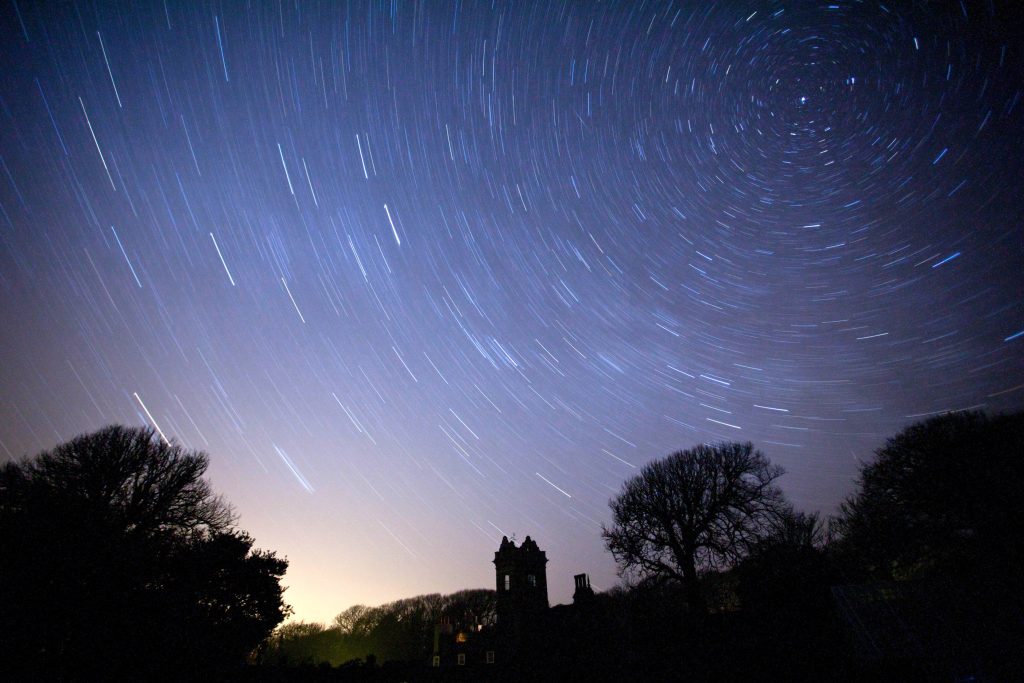From Blue Light to Star Light: A Digital Detox on the Island of Sark

There is a special awe and wonder that a shooting star creates inside all of us as it whizzes across the dark night sky. It is something that goes beyond astronomy or physics, that sense of the power of nature and the vast unknown that is our universe. And perhaps a little splash of magic is involved too.
Claudia Perucchini of Life Butler remembers with nostalgia days of her youth spent waiting for the August shooting stars show. “It was a perfect opportunity for a teenager to camp with friends up in the mountains in the north of Italy, away from light pollution,” she says. “There was storytelling, laughter and countless silent wishes whispered to the stars.”
Claudia talks about a time before the internet and mobile phones, when fax machines were just starting to appear in offices. “You needed to trust your parents and grandparents when they told you that the next day was the night of Saint Lawrence (San Lorenzo) when the shooting stars would make an appearance,” she recalls.
It’s these beautiful childhood memories of a time before the digital era that inspired Life Butler to create From Blue light to Starlight in Sark. This unique retreat, timed to coincide with the Perseid Meteor Shower of Claudia’s memories, is a digital detox, which encourages participants to disconnect from technology.
The Need for a Digital Detox
Research has shown that the average person looks at their phone 46 times a day, and a third are even checking messages in the middle of the night. The negative effects are many: difficulty concentrating, poor posture, arthritis, insomnia and even relationship issues.
Our addiction to digital devices is growing by the day. Whether it’s mobile phones, computers or tablets, they lure us in with their blue lights and promises of easy entertainment. This obsession with the online world is akin to any other addiction, and not something we can simply switch off from easily. Only by ‘unplugging’ can we truly immerse ourselves in unique experiences and begin to see the magic in the world around us once again.
Unplug on Sark Retreat
From the 11th to the 14th August 2018, you can step back in time on the magical island of Sark, an officially designated Dark Sky Preserve. By switching off your devices and embarking on a digital detox, you will discover a new kind of light, immersing yourself in nature. With no cars or street lighting, Sark is one of the best places to view the starry night sky. Over seven thousand stars and planets are visible to the naked eye here, the Milky Way stretching like a ribbon across the black horizon.
The retreat is timed to coincide with the spectacular Perseid Meteor Shower. Guided by David Le Conte, who worked in the NASA space programme at the Smithsonian Astrophysical Observatory, guests will look out for thousands of shooting stars and learn how to photograph the night sky.
Days on Sark are spent walking or cycling the length and breadth of the island, soaking up the wild beauty and foraging for wild growing foods along tiny country lanes, guided by foraging expert John Wright from the UK Channel 4 television show River Cottage. This is a chance to enjoy the simple wonders of life, to paint, read, meditate, listen to music or kayak through the clear waters around the island. You might even see puffins and dolphins.
The Perseid Meteor Shower
The Perseids are widely considered the best meteor shower to view. Fast (up to 37 miles or 59 kilometres per second) and plentiful (50 to 100 meteors seen per hour), they fly across the night sky, leaving fantastic trails of bright light behind them.
Meteors are created from leftover comet and asteroid particles, and the origin of the Perseids is the vast Swift-Tuttle comet. Measuring 16 miles (26 kilometres) across – the comet which is believed to have wiped out the dinosaurs was just half that size – it takes 133 years to orbit the sun once. The Perseids are renowned for their amazing fireballs which create long streaks of light.
It isn’t only the Perseids which might make an appearance during the four-day-long retreat. Jupiter and its four moons, Saturn and its distinctive rings, Mars and even Venus should be visible. So too should the Andromeda Galaxy, the Ring Nebula, the Hercules star cluster and the beautiful constellation which is Cygnus the Swan, with its breath-taking double star, Albireo.
